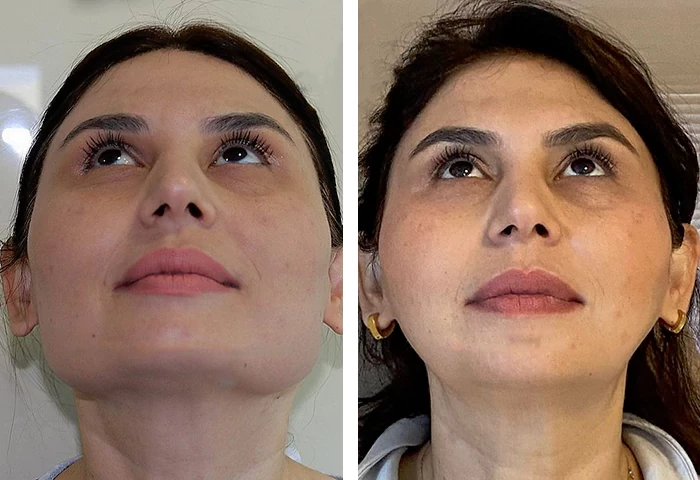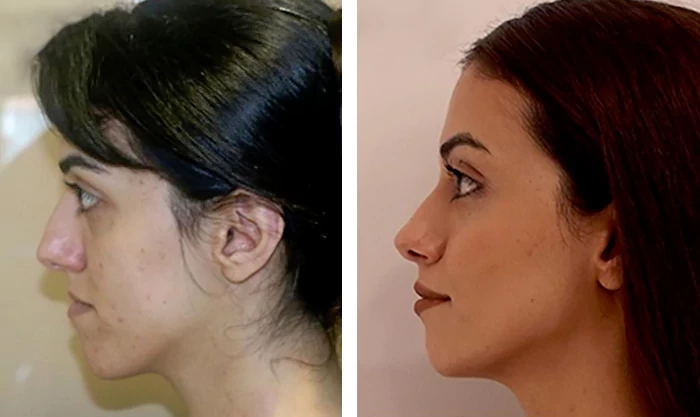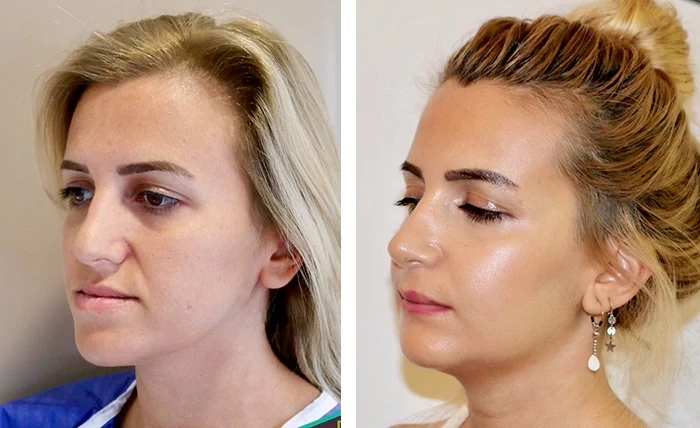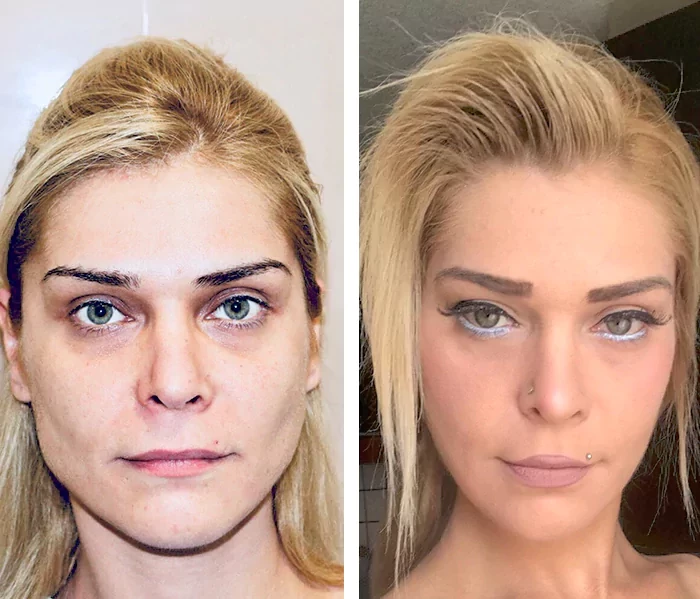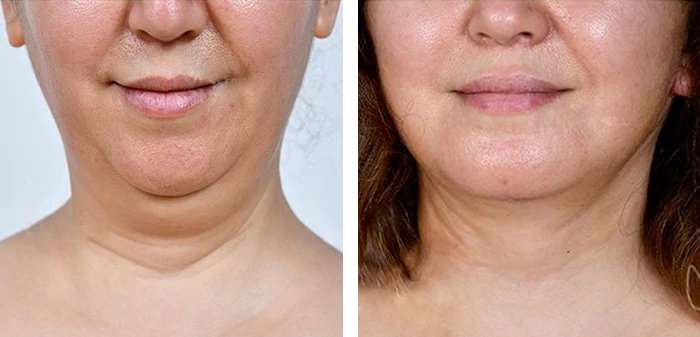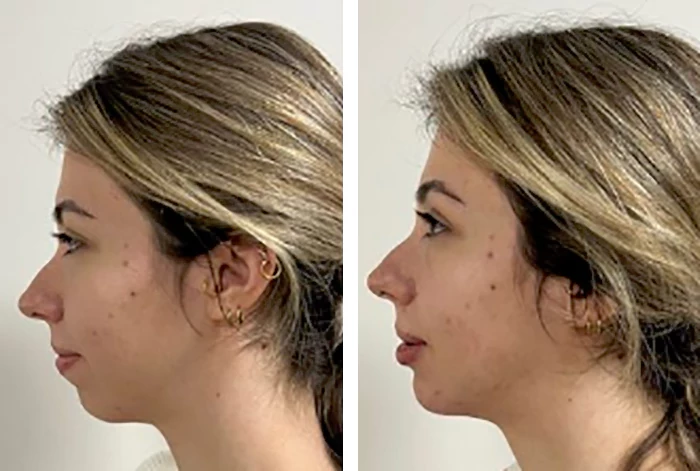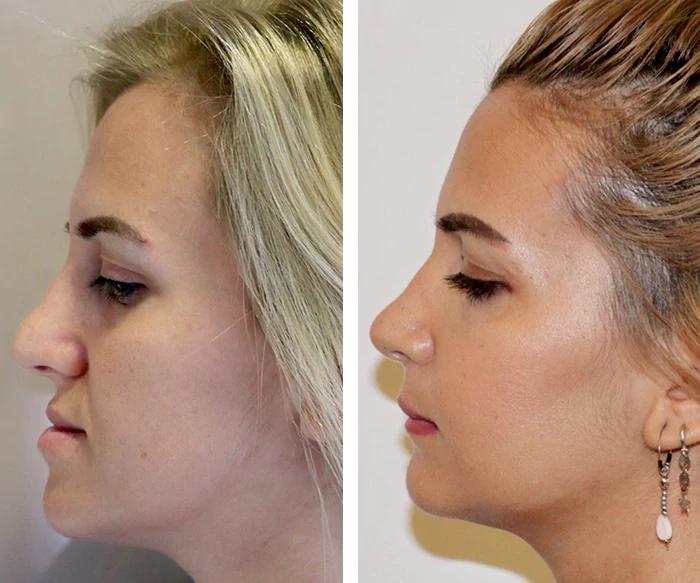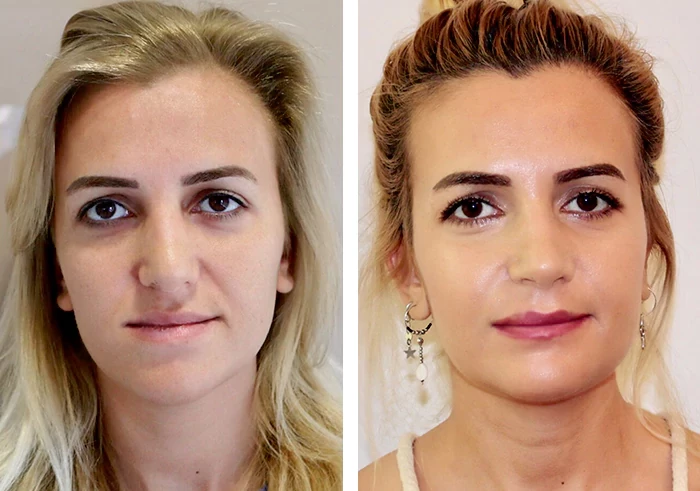What is jaw surgery?
Jaw surgery, also known as orthognathic surgery or corrective jaw surgery, is a type of surgical procedure performed to correct abnormalities or misalignments of the jaw and facial bones. It is usually done by an oral and maxillofacial surgeon in collaboration with an orthodontist.
The process of jaw surgery involves careful planning, including the use of advanced imaging techniques like X-rays, CT scans, and 3D models. During the surgery, incisions are made inside the mouth to access the jawbones, allowing for precise repositioning. In certain cases, additional procedures such as genioplasty (chin surgery) or rhinoplasty (nose surgery) may be performed simultaneously to achieve optimal facial balance.
Jaw surgery can have a significant positive impact on both the functional and aesthetic aspects of a person's life. However, it is a complex procedure that requires careful evaluation and planning by a qualified surgical team. If you have concerns about your jaw alignment or facial appearance, it is best to consult with an oral and maxillofacial surgeon who can provide an accurate assessment and recommend appropriate treatment options.
What are common concerns addressed with jaw surgery?
There are various reasons why someone may require jaw surgery. It can be performed to address functional issues such as difficulty chewing, speaking, or breathing, as well as to correct aesthetic concerns related to facial balance and symmetry. Some common conditions that may necessitate jaw surgery include:
- Malocclusion: Jaw surgery can correct misalignment of the jaws, which often leads to malocclusion (improper bite). This includes conditions such as overbite (upper jaw protrudes beyond the lower jaw), underbite (lower jaw protrudes beyond the upper jaw), crossbite (upper and lower jaws don't align properly), and open bite (space between the upper and lower teeth when the jaws are closed).
- Facial asymmetry: Significant differences in the size or position of the jaws can result in facial asymmetry. Jaw surgery can help to bring balance and symmetry to the face by repositioning the jaws.
- Difficulty chewing or speaking: Misaligned jaws can affect the proper functioning of the teeth, leading to difficulty in chewing and speaking. Jaw surgery can improve the alignment and function of the jaws, allowing for better oral function.
- Temporomandibular joint (TMJ) disorders: Issues with the temporomandibular joint, which connects the jawbone to the skull, can cause pain, discomfort, and limited jaw movement. In some cases, jaw surgery may be necessary to correct structural problems within the joint and alleviate TMJ disorders.
- Sleep apnea and breathing problems: Severe cases of obstructive sleep apnea, where breathing is interrupted during sleep, can sometimes be treated with jaw surgery. By repositioning the jaws, the airway can be widened, reducing breathing obstructions and improving airflow during sleep.
- Facial aesthetics: Jaw surgery can also address aesthetic concerns related to the facial structure. It can enhance facial balance, correct a weak or recessed chin, improve the overall appearance of the jawline, and create a more harmonious facial profile.
It is important to note that jaw surgery is a complex procedure that requires careful evaluation and planning by a qualified oral and maxillofacial surgeon. The specific concerns addressed with jaw surgery will vary based on an individual's unique condition and treatment goals. A thorough examination and consultation with a surgical team can help determine if jaw surgery is the appropriate treatment option for a particular concern.
What are the different types of jaw surgery?
There are several different types of orthognathic surgery, which can be performed depending on the specific needs and concerns of the individual. The most common types of jaw surgery include:
Maxillary osteotomy
This surgery involves repositioning the upper jaw, known as the maxilla. It is typically performed to correct conditions such as an open bite, crossbite, or excessive vertical growth of the maxilla. The maxillary osteotomy allows for precise repositioning of the upper jaw to achieve proper alignment and improve facial balance.
Mandibular osteotomy
Mandibular osteotomy involves repositioning the lower jaw, known as the mandible. It is often performed to address conditions such as an overbite, underbite, or facial asymmetry caused by a misaligned lower jaw. The surgery allows for repositioning of the mandible to achieve proper alignment with the upper jaw and improve bite function and aesthetics.
Genioplasty
Genioplasty, or chin surgery, focuses on reshaping or repositioning the chin. It can be performed as a standalone procedure or in combination with jaw surgery to improve facial harmony and balance. Genioplasty may involve reducing or augmenting the size of the chin, moving it forward or backward, or altering its shape.
Bimaxillary osteotomy
A bimaxillary osteotomy involves repositioning both the upper and lower jaws simultaneously. It is performed to correct severe malocclusions, facial asymmetry, or other complex jaw-related issues that require comprehensive realignment of both jaws. Bimaxillary osteotomy aims to achieve optimal functional and aesthetic results by addressing the relationship between the upper and lower jaws.
Distraction osteogenesis
Distraction osteogenesis is a technique used to gradually lengthen or widen the jaws. It involves making controlled cuts in the jawbone and using a device to gradually separate the bone segments over time. This allows new bone formation in the gap created, resulting in increased jaw size and improved alignment. Distraction osteogenesis is often used in cases of severe jaw size discrepancies or congenital conditions.
It's important to note that the specific type of corrective jaw surgery recommended will depend on an individual's unique condition and treatment goals. A thorough evaluation by an oral and maxillofacial surgeon, along with collaboration with an orthodontist, will determine the most appropriate type of jaw surgery required to address the specific concerns.
Is jaw surgery right for you?
Determining whether jaw surgery, or orthognathic surgery, is right for you depends on several factors, including your specific condition, symptoms, goals, and expectations. Ultimately, this decision should be made in consultation with an experienced oral and maxillofacial surgeon who can evaluate your case and provide personalized recommendations. Here are some factors to consider:
- Functional issues: Jaw surgery is often recommended to correct functional problems related to the jaw, such as severe malocclusion (misalignment of the teeth), difficulty chewing or biting, speech problems, sleep apnea, or temporomandibular joint (TMJ) disorders. If you are experiencing significant functional issues that cannot be adequately addressed with orthodontic treatment alone, jaw surgery may be an appropriate option.
- Aesthetic concerns: Jaw surgery can also address aesthetic concerns, such as facial asymmetry, a receding chin, or a protruding jaw. If you have significant aesthetic concerns that are impacting your self-confidence and quality of life, jaw surgery may help improve facial harmony and balance.
- Orthodontic treatment: In many cases, orthognathic surgery is combined with orthodontic treatment to achieve the best possible results. If you have undergone orthodontic treatment but still have significant jaw misalignment or bite issues, corrective jaw surgery may be recommended to achieve proper alignment and bite function.
- Non-surgical alternatives: Depending on your specific condition, there may be non-surgical alternatives to address your concerns. For example, if your bite issues are mild or primarily related to tooth alignment, orthodontic treatment alone may be sufficient. It is important to explore and discuss all available treatment options with your surgeon to make an informed decision.
- Health and lifestyle factors: Your overall health and lifestyle can influence the suitability of jaw surgery. Factors such as age, general health, oral hygiene practices, and smoking habits may impact the success of the procedure and the healing process. Your surgeon will evaluate these factors during the initial consultation to determine if jaw surgery is appropriate for you.
- Personal expectations: It is essential to have realistic expectations and understand the potential benefits and limitations of jaw surgery. Discuss your goals and expectations with your surgeon to ensure they align with what can be realistically achieved through surgery.
Ultimately, the decision to undergo jaw surgery is a personal one that should be based on a thorough evaluation of your specific condition, in-depth discussions with your surgical team, and a clear understanding of the potential benefits, risks, and recovery process. Your surgeon will guide you through the decision-making process and provide expert advice tailored to your unique situation.
How is jaw surgery performed?
Orthognathic surgery is a complex procedure that is typically performed by an oral and maxillofacial surgeon in collaboration with an orthodontist. The surgical process involves several steps:
- Consultation and planning: The first step is a comprehensive evaluation and consultation with the surgical team. This includes a thorough examination of the teeth, jaws, facial structure, and any associated concerns. Advanced imaging techniques, such as X-rays, CT scans, and 3D models, may be used to assess the condition and plan the surgery.
- Preparatory orthodontic treatment: Before the surgery, the patient may undergo a period of orthodontic treatment. This helps align the teeth and ensures that they fit together properly after the surgery. Orthodontic appliances such as braces or aligners may be used to achieve the desired alignment.
- Anesthesia: On the day of the surgery, anesthesia is administered to ensure the patient's comfort and safety. The type of anesthesia used will be determined based on the complexity of the procedure and the patient's medical condition. It can range from local anesthesia with sedation to general anesthesia, where the patient is completely unconscious.
- Incisions and access: Once the anesthesia has taken effect, the surgeon makes incisions inside the mouth to access the jawbones. This approach, known as intraoral incisions, eliminates the need for external incisions and minimizes visible scarring. In certain cases, small incisions may also be made externally, usually in inconspicuous locations, to provide additional access if needed.
- Repositioning and bone adjustment: With access to the jawbones, the surgeon carefully repositions them according to the pre-operative planning. This involves making precise cuts in the bone, moving the segments into the desired position, and securing them with small screws, plates, or wires. The repositioning aims to achieve proper alignment, improve bite function, and address aesthetic concerns.
- Additional procedures: Depending on the individual's needs, additional procedures may be performed concurrently with jaw surgery. For example, genioplasty (chin surgery) or rhinoplasty (nose surgery) may be carried out to enhance facial harmony and balance.
- Closure and recovery: Once the jawbone segments are repositioned and any necessary additional procedures are completed, the incisions are closed using dissolvable sutures. The patient is then moved to a recovery area to awaken from anesthesia and be monitored. Post-operative instructions and pain management medications are provided to aid in the recovery process.
It's important to note that jaw surgery is a highly individualized procedure, and the specific surgical approach may vary based on the patient's condition and treatment goals. The surgical team will provide detailed information and guidance throughout the process to ensure the best possible outcome.
How do I prepare for jaw surgery?
Preparing for jaw surgery involves several important steps to ensure a smooth and successful procedure. Here are some general guidelines to help you prepare:
- Consultation and evaluation: Schedule a consultation with an oral and maxillofacial surgeon who specializes in orthognathic surgery. During this initial visit, your surgeon will evaluate your condition, discuss treatment options, and explain the surgical process. This is an opportunity to ask questions, clarify doubts, and understand the expected outcomes.
- Orthodontic treatment: In most cases, orthodontic treatment is required before and after jaw surgery to align the teeth properly and ensure an optimal bite. This may involve wearing braces or using aligners to move the teeth into the desired position. Your surgeon will coordinate with an orthodontist to create a treatment plan that integrates orthodontics with the surgical timeline.
- Medical evaluation: Your surgeon will likely request a comprehensive medical evaluation to assess your overall health and ensure you are fit for surgery. This may involve blood tests, imaging studies, and consultations with other medical specialists if necessary. Inform your surgeon about any pre-existing medical conditions, medications, allergies, or previous surgeries to ensure proper preparation and minimize risks.
- Lifestyle adjustments: To promote a healthy recovery, it may be necessary to make certain lifestyle adjustments prior to surgery. This can include quitting smoking, which can interfere with the healing process, and avoiding alcohol or certain medications that may increase bleeding risks. Your surgeon will provide specific instructions regarding lifestyle modifications and any necessary precautions.
- Preoperative instructions: Your surgical team will provide detailed preoperative instructions, which may include fasting guidelines (typically no food or drink after midnight before the surgery), medication adjustments, and specific hygiene protocols. Follow these instructions carefully to ensure a safe and successful surgery.
- Support system: Arrange for a support system to assist you during the recovery period. This can include having a family member or friend available to drive you to and from the surgical center, help with household chores, and provide emotional support throughout the process.
- Postoperative care: Prepare your home environment for a smooth recovery. Stock up on soft foods, as your diet may be restricted for a period after surgery. Ensure that you have a comfortable sleeping arrangement and any necessary supplies recommended by your surgeon, such as ice packs, pain medications, and oral hygiene products.
Remember to address any specific concerns or questions with your surgical team. They are the best resource to provide you with personalized instructions and guidance based on your unique situation. By following their recommendations and properly preparing for jaw surgery, you can help optimize your outcomes and facilitate a smooth recovery process.
What should I expect after jaw surgery?
Recovery from orthognathic surgery can vary depending on the extent of the procedure, but it generally involves a period of rest, a soft-food diet, and adherence to specific care instructions. Regular follow-up appointments with the surgical and orthodontic team are necessary to monitor progress, make any necessary adjustments, and ensure proper healing.
After jaw surgery, it is important to have realistic expectations about the recovery process and understand what to expect. Here are some common aspects of the postoperative period following jaw surgery:
- Hospital stay: Depending on the complexity of the procedure and the surgeon's preference, you may need to stay in the hospital for a day or two after the surgery. This allows for close monitoring of your condition and immediate medical attention if needed.
- Swelling and bruising: Swelling and bruising are common after corrective jaw surgery and can vary in severity. Swelling is typically most pronounced in the first few days after surgery and gradually subsides over several weeks. Applying ice packs as directed by your surgeon can help reduce swelling. Bruising may also be present, particularly around the jawline and neck, but it usually fades within a few weeks.
- Pain management: You will likely experience some discomfort and pain after jaw surgery. Your surgeon will prescribe pain medications to help manage the pain during the initial recovery period. Take the medications as directed and inform your surgeon if the pain is not adequately controlled or if you experience any unexpected side effects.
- Restricted diet: Following jaw surgery, your diet will be limited to soft foods for a period of time to allow for proper healing and minimize strain on the jaw. Your surgeon or a registered dietitian will provide specific dietary guidelines, which may include consuming liquids, pureed foods, and foods that can be easily chewed or swallowed. Gradually, you will progress to a regular diet as advised by your surgical team.
- Oral hygiene: Maintaining good oral hygiene is crucial during the recovery period. Your surgeon will provide specific instructions on how to clean your mouth and teeth after surgery. This may involve rinsing your mouth with a prescribed mouthwash, using a syringe to gently irrigate the surgical sites, and avoiding vigorous brushing or flossing around the incision areas.
- Follow-up appointments: Regular follow-up appointments with your surgical team are essential to monitor your progress and ensure proper healing. These appointments allow your surgeon to assess your recovery, remove any sutures if necessary, and make any necessary adjustments to your treatment plan. It is important to attend these appointments as scheduled and communicate any concerns or questions you may have.
- Orthodontic treatment: If you were undergoing orthodontic treatment before the surgery, it will continue after the surgical phase of your treatment. Your orthodontist will guide you through postoperative orthodontic care, which may involve adjustments to your braces or aligners to continue aligning your teeth and achieving the desired bite.
It is important to follow all postoperative instructions provided by your surgical team, including medication schedules, dietary guidelines, and oral hygiene practices. By doing so, you can help ensure a smooth recovery and achieve the best possible outcomes. Remember that the recovery period varies for each individual, and it may take several weeks to months to fully recover and see the final results of the surgery.
Potential risks and complications of jaw surgery
While jaw surgery is generally safe and effective, like any surgical procedure, it carries certain risks and potential complications. It is important to be aware of these risks and discuss them with your surgeon before undergoing the procedure. Some potential risks and complications of orthognathic surgery include:
- Infection: There is a risk of infection at the surgical site, which can be managed with antibiotics. Following proper oral hygiene practices and adhering to postoperative care instructions can help minimize this risk.
- Bleeding: Some bleeding is expected after surgery, but excessive or prolonged bleeding may require medical intervention. Your surgeon will provide instructions on managing bleeding and when to seek medical attention.
- Nerve damage: The surgery involves manipulation of the jawbones, which can potentially affect the nerves in the area. This can lead to temporary or, rarely, permanent numbness, tingling, or altered sensation in the lips, chin, or tongue. In most cases, nerve function returns to normal over time, but it can take several weeks to months.
- Relapse: In some cases, there may be a slight relapse of the jaw position over time, causing a minor change in the bite. This can occur due to natural healing processes, inadequate stabilization, or other factors. Regular follow-up appointments and adherence to postoperative instructions can help minimize this risk.
- Malocclusion: While the goal of corrective jaw surgery is to correct malocclusion, there is a possibility of an incomplete correction or new occlusal issues emerging. In such cases, further orthodontic treatment or revision surgery may be necessary.
- Temporomandibular joint (TMJ) issues: Jaw surgery can occasionally lead to temporary or, rarely, persistent TMJ-related problems, such as joint stiffness, pain, or clicking. These issues can usually be managed with conservative treatments, but in rare cases, additional interventions may be required.
- Anesthesia-related risks: General anesthesia carries its own risks, including allergic reactions, respiratory problems, or adverse reactions to medications. Your anesthesiologist will evaluate your medical history and monitor you closely during the surgery to minimize these risks.
- Aesthetic dissatisfaction: Although jaw surgery aims to improve facial aesthetics, there is a possibility of not achieving the desired cosmetic outcome. It is important to have realistic expectations and communicate your goals and concerns with your surgical team during the preoperative planning stage.
It's crucial to discuss these potential risks and complications with your surgeon, who can provide personalized information based on your specific case. Your surgeon will take all necessary precautions and provide guidance to minimize these risks and ensure the safest possible surgical experience.
Jaw surgery cost and insurance coverage
The cost of corrective jaw surgery can vary significantly depending on various factors such as the complexity of the procedure, geographic location, surgeon's experience, hospital fees, anesthesia fees, and any additional treatments or tests required. It is important to consult with your surgeon and obtain a detailed cost estimate specific to your case.
In terms of insurance coverage, it depends on your specific insurance plan and policy. Jaw surgery may be covered by insurance if it is considered medically necessary to correct a functional issue, such as a severe bite misalignment or breathing difficulties caused by jaw abnormalities. Insurance coverage typically requires documentation and approval of the medical necessity, including detailed records, diagnostic tests, and photographs.
It is important to note that even with insurance coverage, there may still be out-of-pocket costs, including deductibles, co-pays, and any non-covered expenses. It is advisable to have a clear understanding of your financial obligations before proceeding with the surgery.
Remember to keep all documentation related to your surgery, including pre-authorization letters, bills, and receipts, for potential reimbursement or tax purposes.
Ultimately, it is important to thoroughly research and understand your insurance coverage, consult with your surgeon, and communicate with your insurance company to determine the cost and coverage specifics for your jaw surgery.
FAQs
Can I talk after jaw surgery?
Yes, you can talk after jaw surgery, but it may be limited or difficult initially due to swelling and discomfort. Speech may improve as you heal and adjust to the changes in your jaw position.
How soon after jaw surgery can I eat normally?
The timing for returning to a normal diet after jaw surgery varies depending on the individual and the specific procedure. It typically takes several weeks to progress from a soft food diet to a regular diet, following the guidance of your surgical team.
Is jaw surgery a major surgery?
Jaw surgery is considered a major surgery as it involves repositioning the jawbones. It is performed under general anesthesia and requires a hospital stay. The complexity and extent of the surgery may vary, but it is a significant procedure.
How painful is jaw surgery?
Jaw surgery can be associated with some pain and discomfort, which can vary among individuals. Your surgeon will prescribe pain medications to help manage the pain during the initial recovery period. Pain levels typically decrease over time as healing progresses.

